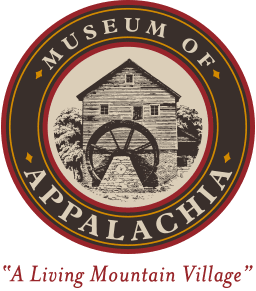The Museum of Appalachia Village
The Museum’s pioneer village allows today’s generation to experience life, as it existed in Old Appalachia. What started with a single log structure has grown over the last 50 years into a 70-acre village. Today, a collection of barns, cabins, and other unique and historic pioneer buildings serve to re-create a rural Appalachian community, complete with a school, a church, primitive homes, and dozens of other authentic structures. Also a working-farm, a multitude of fresh, working gardens, and free-range animals, help to complete the village experience.
More than 30 cabins populate the village—all authentic log structures that reflect different periods of Appalachian history. Moved to the Museum from their various Appalachian origins, these cabins have not only been reconstructed with loving care, but have also been fully furnished, with careful attention to detail. Founder John Rice Irwin believed that it was imperative to “get every item just the way it should be. It is such things as the handmade corner cupboard and the little items on the shelves that really represent the culture of the people of this area.”
Some structures are primitive, such as the one-room Arnwine Cabin which is presumably the smallest structure on the National Register of Historic Places. Others, like the two-story Peters Homestead House, were considered to be “mansions” by frontier standards. Some even belonged to the famous, such as the Mark Twain Family Cabin. A rare Appalachian Cantilever barn, and an authentic water-powered corn and wheat mill, are two other highlights to be found along the village trail.





